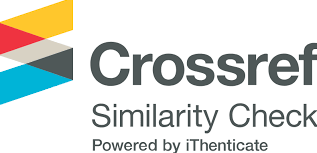Research on propagation of Lithocarpus ducampii (Hickel & A. Camus) A. Camus) from seed by using biodegradable non-woven nursery bag at the nursery stage
Keywords:
Lithocarpus ducampii, propagation, organic bagAbstract
Lithocarpus ducampiiis a native evergreen broadleaf tree with straight trunk,
growing fast and great potential for planting large size timber plantation. However, up to now, seedlings of this species are still propagated by black plastic
bags with topsoil as potting mix. The plastic bags with topsoil was heavy when
transporting and causes environmental pollution, so it is necessary to propagate
by biodegradable non-woven nursery bags to reduce transportation cost and
contribute to environmental protection. The results of the study showed that:
Seeds of L. ducampii are big and easy to germinate, the germination rate is
85.2% when incubated with moist sand. Root quality of L. ducampiiseedlings
in biodegradable non-woven nursery bags was better than in black plastic bags
with topsoil. The best growing root system in pot substrate consisting of 65%
peat + 30% rice husk + 5% dried cow dung (CT2) and pot substrate comprising
55% acacia bark powder + 25% sawdust + 15% charcoal + 5% dried cow dung
(CT4). The best growth in diameter and height in CT2, CT4 and black plastic with pot substrate including topsoil + 1% NPK 5:10:3 fertilizer (CT1). The
weight of 9 months old seedlings in biodegradable non-woven nursery bags is
only 0.31-0.56 times of the seedings in black plastic bags with topsoil, but the
cost is 1.08-1.41 times higher. Biodegradable non-woven nursery bags with pot
substrate consisting of 55% acacia bark powder + 25% sawdust + 15% charcoal
+ 5% dry cow dung is the most suitable in terms of root development, growth,
weight and cost of the seedling to produce seedling of L. ducampii.
References
1. Bộ Công thương, 2021. Báo cáo xuất nhập khẩu Việt Nam 2020. Nhà xuất bản Công thương, Hà Nội, 229 trang.
2. Võ Đại Hải, Nguyễn Tử Kim, Vũ Thị Ngoan, Nguyễn Thị Trịnh và Nguyễn Trọng Nghĩa, 2019. Đánh giá khả năng sử dụng gỗ của Dẻ đỏ (Lithocarpus ducampii A.Camus). Tạp chí Khoa học Lâm nghiệp, số 3: 131-138.
3. Đào Hùng Mạnh, Võ Đại Hải, Nguyễn Anh Dũng, Nguyễn Anh Duy, Phùng Hà Anh, 2019. Đánh giá các mô hình và biện pháp kỹ thuật trồng rừng Dẻ đỏ (Lithocarpus ducampii A. Camus) tại các tỉnh Phú Thọ, Hòa Bình và Yên Bái, Tạp chí Khoa học Lâm nghiệp số chuyên đề năm 2019: Trung tâm Khoa học Lâm nghiệp vùng Trung tâm
Bắc Bộ, 60 năm xây dựng và phát triển (1959-2019): 81-90.
4. Tô Xuân Phúc, Cao Thị Cẩm, Trần Lê Huy, Nguyễn Tôn Quyền, Huỳnh Văn Hạnh, 2019. Việt Nam xuất khẩu gỗ 2018. Một năm nhìn lại và xu hướng 2019. NORAD và UKAID, 78 trang.
5. Thủ tướng Chính phủ, 2021. Quyết định số 523/QĐ-TTg ngày 1 tháng 4 năm 2021 của Thủ tướng Chính phủ về việc phê duyệt chiến lược phát triển Lâm nghiệp giai đoạn 2021-2030, tầm nhìn đến năm 2050.








